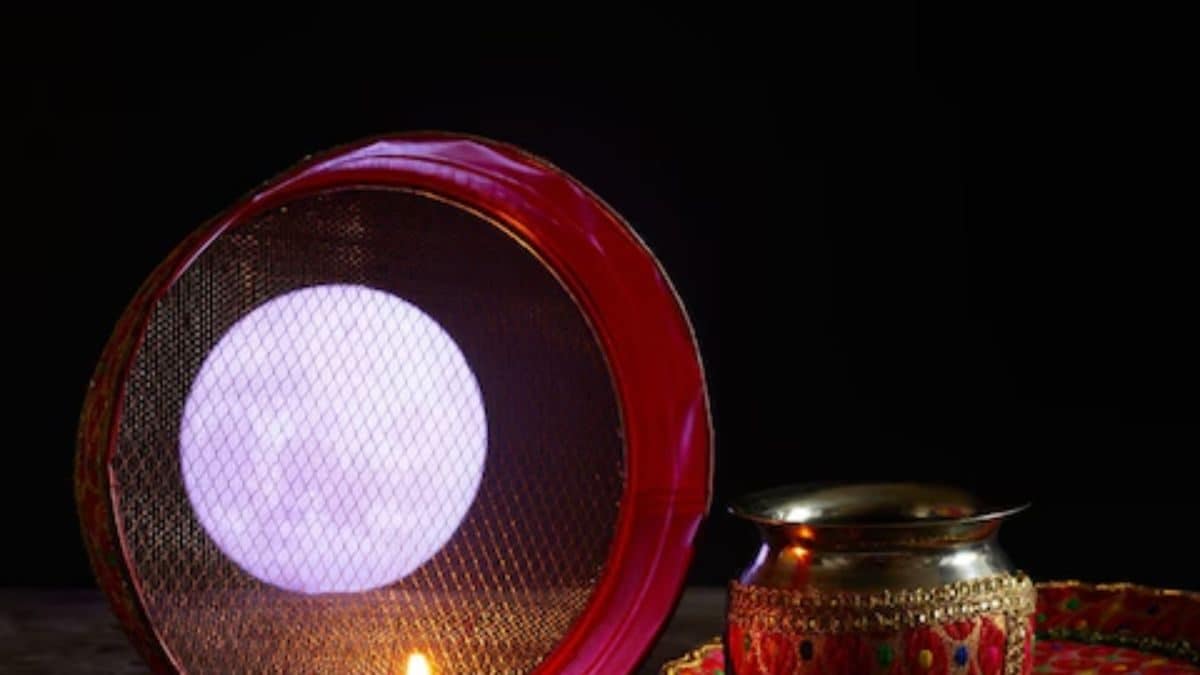Karwa Chauth is a significant Hindu festival observed by married women primarily in northern and western India. This annual fast is undertaken for the long life, prosperity, and well-being of their husbands. The festival is deeply rooted in tradition and involves intricate rituals, one of the most important being the preparation and use of the Karwa. The Karwa, a small clay pot (though other materials are now used), acts as a symbolic vessel, containing offerings to the deity Karwa Mata, believed to bless the devotees. The meticulous selection and placement of items within the Karwa reflect a profound reverence for tradition and faith, showcasing the importance of the festival. This detailed guide explores the significance of the Karwa and its contents, clarifying the essence of this age-old tradition.
The Significance of the Karwa in Karwa Chauth
The Karwa holds a central place in Karwa Chauth rituals. It’s not merely a container; it’s a sacred vessel representing Karwa Mata, a deity associated with marital well-being and longevity. The items placed within the Karwa aren’t chosen randomly; each holds symbolic significance and contributes to the overall sanctity of the puja. Traditionally crafted from clay, modern Karwas are also made of brass or copper, retaining their symbolic importance regardless of the material. The meticulous care in filling the Karwa demonstrates the women’s devotion and sincere prayers for their husbands.
Symbolic Items in the Karwa
The specific items placed within the Karwa vary slightly based on regional customs and family traditions, yet some elements remain consistent throughout. Wheat, a staple grain, is highly auspicious and represents abundance and prosperity. The presence of sugar, often placed on the lid, symbolizes sweetness in the marital relationship. In some regions, Ganga water or milk is included, embodying purity and cleansing. These symbolic inclusions underscore the importance of sustaining life, happiness, and nourishment within the marriage.
Traditional Grains and Other Offerings
Besides wheat and sugar, several other traditional items are often included. Akshat (uncooked rice grains) symbolizes purity and prosperity. Kheel (puffed rice), with its light and airy texture, symbolizes the ephemeral nature of life and emphasizes the preciousness of marital bonds. The inclusion of a silver coin reflects the desire for material prosperity and the hope of financial stability within the family. These inclusions demonstrate a holistic approach, intertwining spiritual devotion with the everyday aspects of married life and a secure future. The use of these items enhances the significance of the Karwa’s role in the puja ceremony.
Karwa Chauth Puja and Rituals
The Karwa Chauth fast is not just about abstaining from food and water; it encompasses a comprehensive set of rituals culminating in the evening puja. The timing of this puja is critical, coinciding with the moonrise. Observing the exact timings, particularly the moonrise, is crucial as it dictates the time for breaking the fast. This precisely timed ceremony emphasizes the devotion and faith integral to Karwa Chauth. These ritualistic practices serve as a powerful reinforcement of their commitment to the well-being of their spouses.
The Importance of Moonrise
The moonrise on Karwa Chauth is particularly significant. It is the symbolic moment when the women are allowed to break their fast, and the items in the Karwa play an important role in this ceremony. The offerings are presented to the moon, symbolically connecting their devotion with celestial blessings for marital happiness and continued togetherness. The observance of the moonrise solidifies the spiritual significance of the day, binding the earthly devotion to celestial blessings.
Puja Timing and Significance
The puja timings vary slightly from year to year and region to region. It’s advisable to consult local panchangs (Hindu calendars) for precise timings. However, the fundamental practice of evening prayers during moonrise stays constant. The specific duration of the fast also differs; often, it’s observed for the entire day until moonrise, highlighting the steadfast commitment made by women in honor of their husbands. The attention to timing signifies a dedication to precision and the deep spiritual meaning inherent in the observance.
The Folklore and Significance Behind Karwa Chauth
The rich tapestry of folklore and legends surrounding Karwa Chauth adds depth and meaning to the festival. The widely known story of Queen Veeravati, who embarked on her first Karwa Chauth, highlights the intense devotion and selflessness embedded within the festival. The story reinforces the sacrifices associated with the ritual, providing a powerful and emotional context to the yearly observance. This compelling narrative demonstrates the power of faith and love as demonstrated through commitment and unwavering dedication.
Queen Veeravati and the Karwa Chauth Story
Queen Veeravati’s story resonates deeply, embodying the spirit of Karwa Chauth. The trials she faces demonstrate the immense love and concern for one’s spouse, creating a deeply emotional connection to the ritual. It shows the lengths women go to in the name of their husbands’ well-being. This classic tale creates a powerful symbol of love, sacrifice, and unwavering dedication within marital relationships and forms a crucial basis for this fast.
Takeaway Points
- The Karwa is a central element in Karwa Chauth, representing Karwa Mata and serving as a vessel for sacred offerings.
- Traditional items placed inside the Karwa include wheat, sugar, Akshat (uncooked rice grains), kheel (puffed rice), and sometimes a silver coin. Each item holds significant symbolism related to prosperity, purity, and marital bliss.
- The Karwa Chauth puja and the moonrise are meticulously timed, highlighting the importance of precision and devotion in the festival.
- Folklore, especially the story of Queen Veeravati, significantly contributes to the emotional depth and historical significance of the Karwa Chauth celebration. The ritual’s underlying themes emphasize the profound value women place on marital commitment and enduring love.









